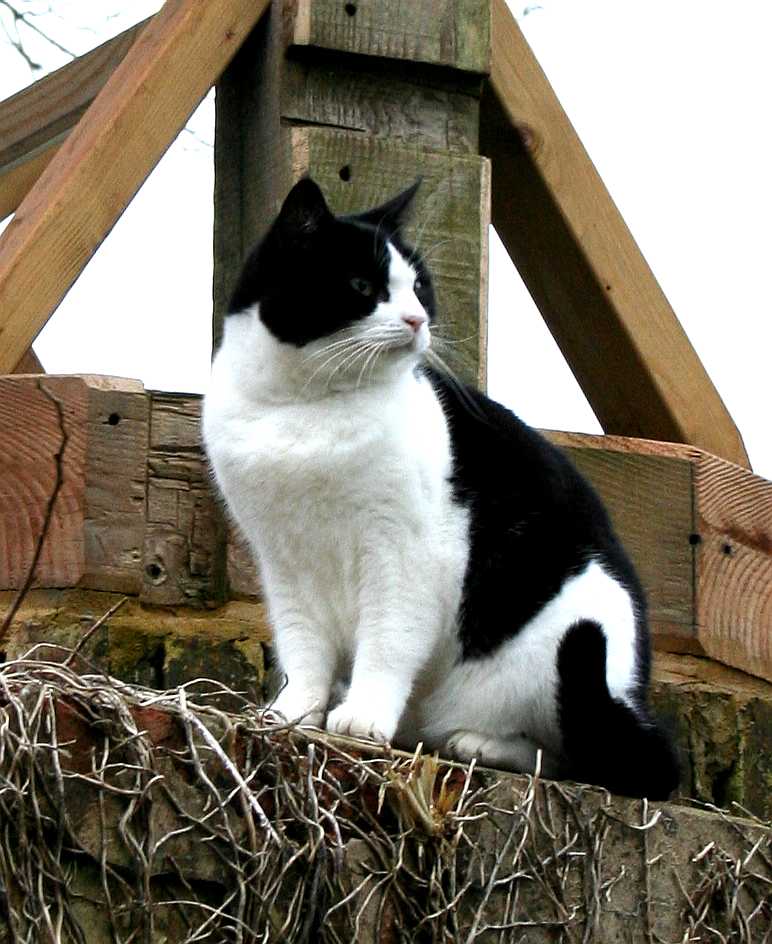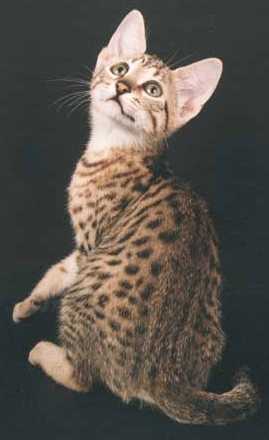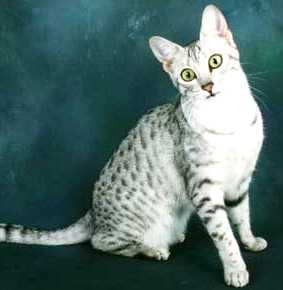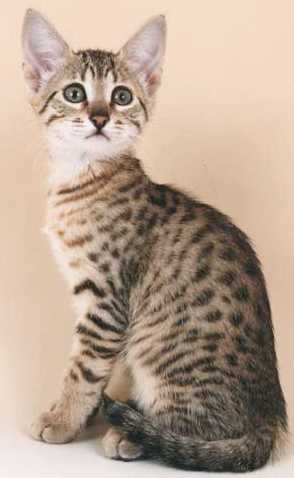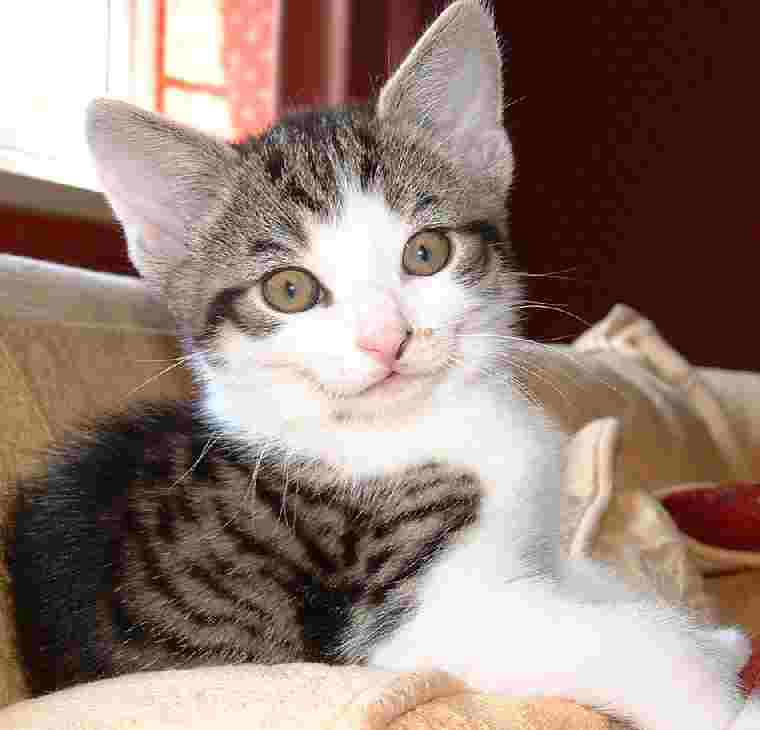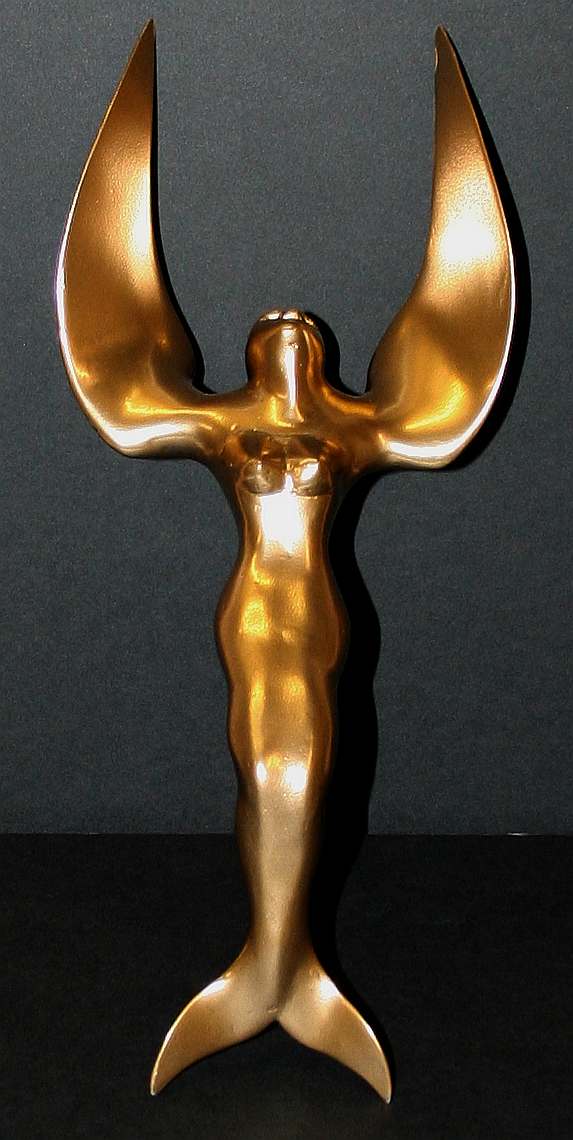Abyssinian
-
Abyssinian Breed Profile (Cat Fanciers' Association)
-
Abyssinian Breed Standard (Cat Fanciers' Association)
-
Abyssinian Breed Standard (The International Cat Association)
-
Abyssinians (Göran Melander, Sweden)
-
Abyssinian Introduction (PetNet, Australia)
-
Abyssinians in brief (Cat Fancy Magazine)
-
Also see Abyssinian Breeder Listing
Books about Abyssinian Cats
-
Guide to Owning an Abyssinian Cat, Judah Track, 1998.
-
Abyssinian Cats: Everything About Acquisition, Care, Nutrition, Behavior, Health Care, and Breeding, J. Anne Helgren, J. Anne Hauppauge, 1995.
-
This Is The Abyssinian Cat, Kate Faler, 1984.
-
Abyssinians, Ruth Cooke-Zimmermann, 1992.
-
This Is The Abyssinian Cat, Stuart A. Kallen, 1996.
American Bobtail
-
American Bobtail Breed Standard (The International Cat Association)
-
American Bobtail breed profile, picture gallery, and list of breeders.
-
American Bobtails in brief (Cat Fancy Magazine)
-
Also see American Bobtail Breeder Listing
American Curl
-
American Curl Breed Profile (Cat Fanciers' Association)
-
American Curl Breed Standard (Cat Fanciers' Association)
-
Breed Article: American Curl (Cat Fanciers' Association)
-
American Curl Breed Standards (The International Cat Association)
-
American Curls in brief (Cat Fancy Magazine)
-
Also see American Curl Breeder Listing
Books about American Curl Cats
-
American Curl Cat, Stuart A. Kallen, 1998.
American Shorthair
-
American Shorthair Breed Profile (Cat Fanciers' Association)
-
American Shorthair Breed Standard (Cat Fanciers' Association)
-
American Shorthair Breed Standard (The International Cat Association)
-
American Shorthairs in brief (Cat Fancy Magazine)
-
Also see American Shorthair Breeder Listing
Books about American Shorthair Cats
-
American Shorthair Cats: Everything About Purchase, Care, Nutrition, Health Care, Behavior, and Showing, Karen Leigh Davis, 1999.
-
The American Shorthair Cat, Ingeborg Urcia, 1992.
-
The British, European, and American Shorthair Cat, Phyllis Lauder.
American Wirehair
-
American Wirehair Breed Profile (Cat Fanciers' Association)
-
American Wirehair Breed Standard (Cat Fanciers' Association)
-
American Wirehair Breed Standard (The International Cat Association)
-
American Wirehairs in brief (Cat Fancy Magazine)
-
Also see American Wirehair Breeder Listing
Anatolian
Asian Group
-
Asian Cats (Asian Group Cat Society)
-
Also see Asian Breeder Listing
Australian Mist
-
Australian Mist Introduction (PetNet, Australia)
-
Also see Australian Mist Breeder Listing
Balinese
-
Balinese Breed Profile (Cat Fanciers' Association)
-
Balinese Breed Standard (Cat Fanciers' Association)
-
Balinese Breed Standard (The International Cat Association)
-
Breed Article: Balinese (Cat Fanciers' Association)
-
What is a Balinese? (USA)
-
Balinese Introduction (PetNet, Australia)
-
Also see Balinese and Traditional Balinese Breeder Listings
Books about Balinese Cats
-
Balinese Cats, Stuart A. Kallen, 1998.
Bengal
-
Bengal Cat FAQ (The International Bengal Cat Society)
-
Bengal Breed Standard (The International Cat Association)
-
The Bengal (Jean Mill)
-
Bengals in brief (Cat Fancy Magazine)
-
Also see Bengal Breeder Listing
Books about Bengal Cats
-
Guide to Owning a Bengal Cat, Jean S. Mill, 1997.
-
Bengal Cats : Everything About Purchase, Care, Nutrition, Breeding, Health Care, and Behavior, Dan Rice, 1995.
Birman
-
Another fine Birman Breed FAQ
-
Birman Breed Profile (Cat Fanciers' Association)
-
Birman Breed Standard (Cat Fanciers' Association)
-
Birman Breed Standard (The International Cat Association)
-
Birman Introduction (PetNet, Australia)
-
Birmans in brief (Cat Fancy Magazine)
-
Also see Birman Breeder Listing
Books about Birman Cats
-
Birman Cats : Everything About Purchase, Care, Nutrition, Breeding, Health Care, and Behavior, Phil Maggitti, 1996.
Bombay
-
Bombay Breed Profile (Cat Fanciers' Association)
-
Bombay Breed Standard (Cat Fanciers' Association)
-
Bombay Breed Standard (The International Cat Association)
-
Bombay in brief (Cat Fancy Magazine)
-
Also see Bombay Breeder Listing
Brazilian Shorthair
-
Brazilian Shorthair (www.petbrazil.com.br)
British Shorthair
-
British Shorthair Breed Profile (Cat Fanciers' Association)
-
British Shorthair Breed Standard (Cat Fanciers' Association)
-
British Shorthair Standard (The International Cat Association)
-
Breed Article: British Shorthair (Cat Fanciers' Association)
-
British Shorthair Introduction (PetNet, Australia)
-
British Shorthairs in brief (Cat Fancy Magazine)
-
Also see British Shorthair Breeder Listing
Books about British Shorthair Cats
-
The British Shorthair Cat: Everything About Acquisitions, Care, Nutrition, Behavior, Health Care, and Breeding, Friedhelm Lessmeier, 1997.
-
The British, European, and American Shorthair Cat, Phyllis Lauder.
Burmese
-
Burmese Breed Profile (Cat Fanciers' Association)
-
Burmese Breed Standard (Cat Fanciers' Association)
-
Burmese Breed Standard (The International Cat Association)
-
Burmese in brief (Cat Fancy Magazine)
-
European Burmese Breed Profile (Cat Fanciers' Association)
-
European Burmese Breed Standard (Cat Fanciers' Association)
-
Burmese Introduction (PetNet, Australia)
-
Also see Burmese and European Burmese Breeder Listing
Books about Burmese Cats
-
Burmese Cats: Everything About Acquisition, Care, Nutrition, Behavior, Health Care, and Breeding, Carolyn Vella & John McGonagle Jr., 1995.
-
Guide to Owning a Burmese Cat, Justine O'Flynn, 1997.
Burmilla
See the Asian Group.
California Spangled Cat
-
California Spangled Breed Standard (The International Cat Association)
-
California Spangled Cat in brief (Cat Fancy Magazine)
Chantilly/Tiffany
-
Tiffany/Chantilly Breed Standard (Traditional Cat Association)
-
Chantilly/Tiffany in brief (Cat Fancy Magazine)
-
Also see Chantilly/Tiffany Breeder Listing
Chartreux
-
Chartreux Breed Profile (Cat Fanciers' Association)
-
Chartreux Breed Standard (Cat Fanciers' Association)
-
Chartreux Breed Standard (The International Cat Association)
-
Chartreux in brief (Cat Fancy Magazine)
-
Also see Chartreux Breeder Listing
Books about Chartreux Cats
-
Chartreux Cat, Jean Simonnet, 1990.
Chausie
-
Chausies in brief (Cat Fancy Magazine)
-
Chausie Breed Standard (The International Cat Association)
-
Also see Chausie Breeder Listing
Colorpoint Longhair
See Persian.
Colorpoint Shorthair
-
Colorpoint Shorthair Breed Profile (Cat Fanciers' Association)
-
Colorpoint Shorthair Breed Standard (Cat Fanciers' Association)
-
Colorpoint Shorthair in brief (Cat Fancy Magazine)
-
Also see Colorpoint Shorthair Breeder Listing
Cornish Rex
-
Cornish Rex Breed Profile (Cat Fanciers' Association)
-
Cornish Rex Breed Standard (Cat Fanciers' Association)
-
Cornish Rex Breed Standard (The International Cat Association)
-
Cornish Rex in brief (Cat Fancy Magazine)
-
Cornish Rex Introduction (PetNet, Australia)
-
Also see Cornish Rex Breeder Listing
Cymric
See Manx.
Devon Rex
-
Devon Rex Breed Profile (Cat Fanciers' Association)
-
Devon Rex Breed Standard (Cat Fanciers' Association)
-
Devon Rex Breed Standard (The International Cat Association)
-
Devon Rex in brief (Cat Fancy Magazine)
-
The Devon Rex home page.
-
Devon Rex Introduction (PetNet, Australia)
-
Also see Devon Rex Breeder Listing
Books about Devon Rex Cats
-
Devon Rex Cats, Stuart A. Kallen.
Don Hairless
-
Don Hairless Breed Standard (The International Cat Association)
Domestic, Household Pet (Non-Pedigreed)
-
Household Pet Standard (The International Cat Association)
-
Domestic (non-pedigreed cat) Introduction (PetNet, Australia)
Egyptian Mau
-
Egyptian Mau Breed Profile (Cat Fanciers' Association)
-
Egyptian Mau Breed Standard (Cat Fanciers' Association)
-
Egyptian Mau Breed Standard (The International Cat Association)
-
Egyptian Mau in brief (Cat Fancy Magazine)
-
Also see Egyptian Mau Breeder Listing
European Burmese
See Burmese.
European Shorthair
-
European Shorthair (in Swedish and English)
Books about European Shorthair Cats
-
The British, European, and American Shorthair Cat, Phyllis Lauder.
Exotic Shorthair
-
Exotic Breed Profile (Cat Fanciers' Association)
-
Exotic Breed Standard (Cat Fanciers' Association)
-
Exotic Shorthair Breed Standard (The International Cat Association)
-
Exotic in brief (Cat Fancy Magazine)
-
Exotic Shorthair Introduction (PetNet, Australia)
-
Also see Exotic Shorthair Breeder Listing
Books about Exotic Shorthair Cats
-
The Exotic Shorthair Cat: Everything About Acquisition, Care, Nutrition, Behavior, Health Care, and Breeding , Karen Leigh Davis, 1997.
-
Exotic Shorthair Cats, Stuart A. Kallen, 1998.
German Rex
-
German Rex (in Portugese)
-
German Rex Breed Standard (The Australian Cat Federation)
-
Also see Cornish Rex
Havana Brown
-
Havana Brown Breed Profile (Cat Fanciers' Association)
-
Havana Brown Breed Standard (Cat Fanciers' Association)
-
Havana Breed Standard (The International Cat Association)
-
Havana Brown in brief (Cat Fancy Magazine)
-
Also see Havana Brown Breeder Listing
Himalayan
See Persian.
Japanese Bobtail
-
Japanese Bobtail Breed Profile (Cat Fanciers' Association)
-
Japanese Bobtail Breed Standard (Cat Fanciers' Association)
-
Breed Article: Japanese Bobtail (Cat Fanciers' Association)
-
Japanese Bobtail Breed Standard (The International Cat Association)
-
Japanese Bobtail in brief (Cat Fancy Magazine)
-
Also see Japanese Bobtail Breeder Listing
Javanese
-
Javanese Breed Profile (Cat Fanciers' Association)
-
Javanese Breed Standard (Cat Fanciers' Association)
-
Javanese in brief (Cat Fancy Magazine)
-
Breed Article: Javanese (Cat Fanciers' Association)
-
What is a Javanese? (USA)
-
Also see Javanese Breeder Listing
Korat
-
Korat Breed Profile (Cat Fanciers' Association)
-
Korat Breed Standard (Cat Fanciers' Association)
-
Korat Breed Standard (The International Cat Association)
-
Korat in brief (Cat Fancy Magazine)
-
Korat Breed Article (Cat Fanciers' Association)
-
Korat Introduction (PetNet, Australia)
-
Also see Korat Breeder Listing
LaPerm
-
LaPerm Breed Standard (The International Cat Association)
-
LaPerm in brief (Cat Fancy Magazine)
-
The Curly-Coated LaPerm (Cyber-Pet)
-
Also see LaPerm Breeder Listing
